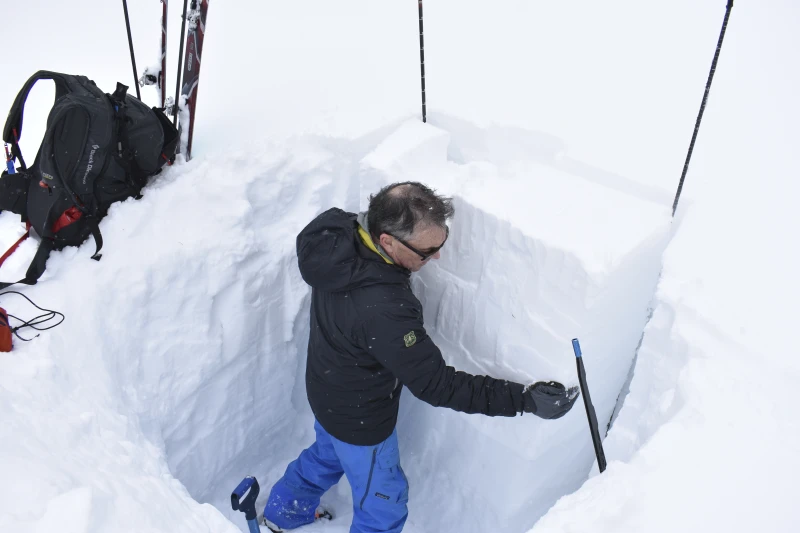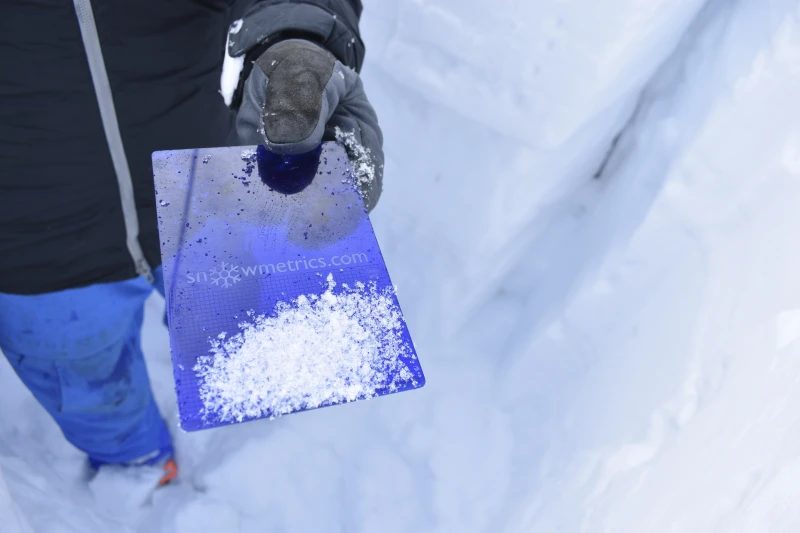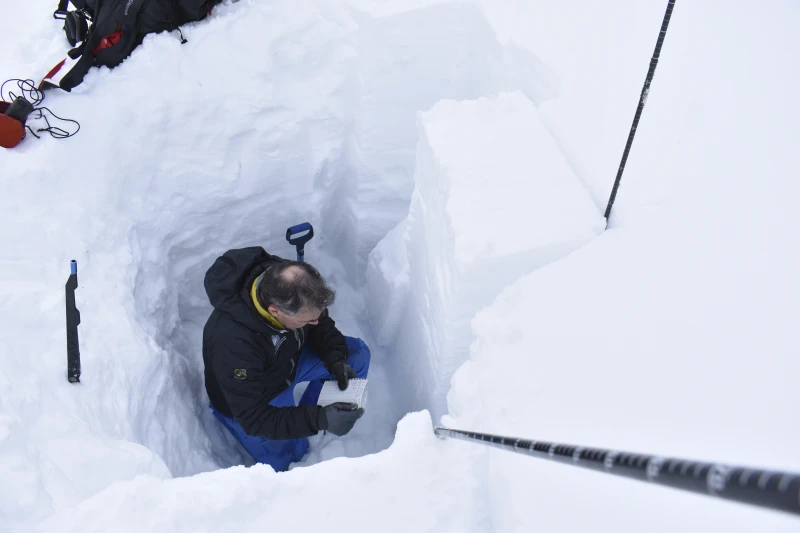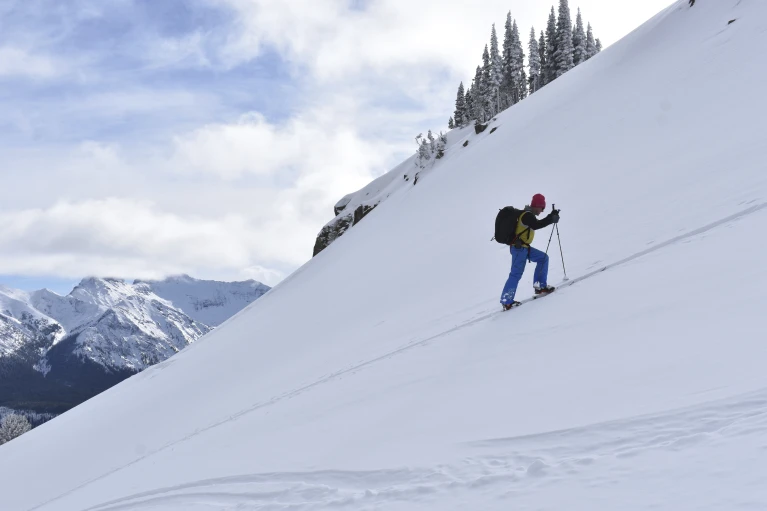The recent harrowing experience of Wesley Mlaskoch in the Montana backcountry serves as a stark reminder of the ever-present dangers posed by avalanches in remote mountainous regions.
Mlaskoch’s close call, where he narrowly escaped being buried in an avalanche by deploying an inflatable airbag, underscores the critical importance of avalanche safety measures for individuals engaging in snowmobiling, skiing, and snowboarding in backcountry areas.
This incident, along with the broader context of increasing backcountry recreational activities and the challenges posed by climate change, highlights the need for heightened awareness and proactive measures to mitigate the risks associated with avalanches.
Mlaskoch’s encounter with an avalanche near Yellowstone National Park serves as a vivid illustration of the potential peril faced by outdoor enthusiasts venturing into the uncharted wilderness.
His survival, facilitated by the use of advanced safety equipment, such as the inflatable airbag, underscores the significance of technological innovations in enhancing the chances of survival in avalanche situations.
Furthermore, the swift response of Mlaskoch’s companions, who promptly initiated rescue efforts, exemplifies the critical role of preparedness and teamwork in mitigating the consequences of avalanche incidents.
The broader implications of Mlaskoch’s experience extend beyond the individual level, shedding light on the collective challenges faced by avalanche safety specialists and organizations dedicated to forecasting and preventing avalanche accidents.
The Gallatin National Forest Avalanche Center, along with similar entities across the United States, plays a pivotal role in disseminating crucial information and promoting safety awareness among backcountry enthusiasts.
The dissemination of cautionary tales, such as Mlaskoch’s ordeal, serves as an essential educational tool, highlighting the real and present dangers posed by avalanches and the imperative need for proactive safety measures.

The increasing complexities and risks associated with avalanche safety are further compounded by the evolving dynamics of climate change and the surge in backcountry recreational activities, particularly in the wake of the COVID-19 pandemic.
Avalanche safety specialists contend that the confluence of these factors has significantly heightened the challenges associated with forecasting and preventing avalanche incidents.
The intensifying impact of climate change, characterized by extreme weather patterns, has engendered greater unpredictability in snowpack stability, amplifying the potential for hazardous avalanches in mountainous regions.
Moreover, the surge in the number of individuals engaging in backcountry skiing, snowboarding, and snowmobiling has broadened the scope of avalanche safety concerns, as the influx of recreational enthusiasts translates into a higher likelihood of triggering fatal avalanches.
Despite the advancements in safety equipment, including the pivotal role played by inflatable airbags in averting disaster, the escalating frequency of backcountry activities has underscored the imperative need for heightened vigilance and preparedness among outdoor enthusiasts.
The inherent risks associated with avalanche-prone regions, such as Cooke City, Montana, underscore the critical need for proactive measures to enhance avalanche safety and minimize the potential for tragic outcomes.
The staggering toll of 22 snowmobiler and two skier fatalities in the area since 1998 serves as a somber reminder of the lethal consequences of avalanches, emphasizing the pressing need for sustained efforts to mitigate these risks.
The dire implications of a persistently unstable snowpack, characterized by a precarious weak layer, further accentuate the urgency of promoting awareness and preparedness among individuals venturing into avalanche-prone territories.
In conclusion, the recent avalanche incident involving Wesley Mlaskoch serves as a poignant reminder of the inherent dangers posed by avalanches in backcountry environments.
The convergence of factors such as climate change, increased backcountry recreational activities, and the persistent challenges confronting avalanche safety specialists underscores the imperative need for heightened vigilance and proactive measures to mitigate the risks associated with avalanches.
Through sustained efforts in education, preparedness, and technological advancements, the collective goal of minimizing avalanche-related fatalities and promoting safety in backcountry recreation can be realized.
As we navigate the complexities of avalanche safety in an evolving landscape, the resilience and vigilance of individuals and the concerted efforts of avalanche safety organizations will play a pivotal role in safeguarding the lives of those venturing into the untamed wilderness.
The Cooke City area is known for its stunningly steep terrain, which makes it especially prone to avalanches. With no ski patrol available, the responsibility for rescue falls on one’s own partner or group.
According to Chabot, the chances of survival increase significantly if a person is dug up within 10 minutes of being buried, with an 80% likelihood of survival.
However, the descent during an avalanche is far from smooth, with the potential for hitting rocks and trees, as well as experiencing trauma.
Even in the best-case scenario, there is still a 20% chance that the person may not survive. Despite the inherent dangers of the Beartooth Mountains in southwest Montana, people continue to put their lives at risk.

Chabot’s mission is to ensure that individuals are fully aware of the risks they are taking. Over the course of 29 years, he has meticulously monitored the region’s weather, conducted surveys of backcountry sites, and assessed snow conditions in order to provide accurate avalanche forecasts.
On the same day that Mlaskoch nearly lost his life, Chabot ventured through the forest on a snowmobile before transitioning to skis to ascend a steep slope.
He carefully navigated around hazardous terrain and recent snowmobile tracks before reaching a clearing, where he proceeded to dig with a lightweight shovel.
As the depth of snow increases, its density and strength also tend to amplify. However, when subjected to fluctuating temperatures, particularly in instances where the snow cover is not substantial, a factor exacerbated by climate change-induced droughts, the snow can undergo a transformation into delicate, sugar-like crystals.
These crystals are prone to rapid disintegration under excessive weight, such as following heavy snowfall or when wind accumulates snow on one side of a mountain.
Delving into the snow, Chabot encountered solid ground at a depth of 5 feet (1.5 meters), casting aside icy grains from the excavation. “It’s as if I’m shoveling sugar here,” he remarked.
Employing a saw, he isolated a column of snow and proceeded to strike the top of the column with his shovel, gradually increasing the force until a slab of snow fractured about 2 1/2 feet (76 centimeters) from the top.
This breakage occurred along the same fragile layer where the slope had collapsed beneath Mlaskoch, indicative of a weak zone permeating the adjacent snow fields.
In recent years, she and other business owners have taken a more proactive approach in promoting avalanche safety in their community.
They have been organizing weekly public safety briefings at the Antlers Lodge, which are advertised through flyers and word of mouth in various establishments in Cooke City.
Additionally, avalanche educators have been providing basic rescue lessons at a backcountry warming hut used by snowmobilers on Saturdays, including instruction on how to use avalanche beacons.

While the equipment may be costly, Mlaskoch emphasizes its importance, and some local outfitters have even made it mandatory for individuals to have the gear before embarking on trips.
Shannon Abelseth, a snowmobile outfitter in Cooke City, acknowledges that it may seem repetitive to constantly preach about safety, but emphasizes the necessity of doing so to prevent tragic accidents.
The collective effort of these business owners reflects their commitment to ensuring the well-being of their community members and visitors, as they strive to avoid any fatalities resulting from avalanches.
